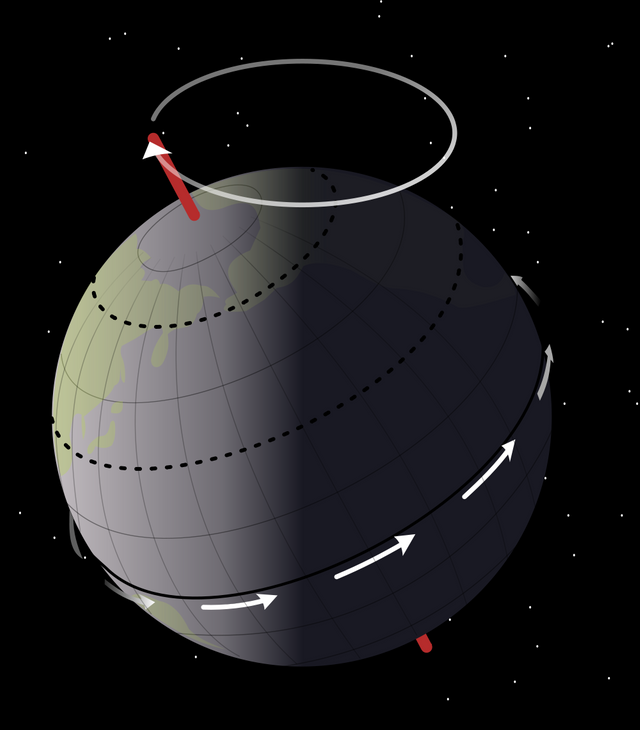Concepts in Astronomy #15. Axial Precession
Axial Precession
The axial precession period of a celestial object (in this case Earth) is the movement that the Earth's axis does changing its orientation slowly and progressively, completing a whole circle in 25772 years. This movement is like the one of a spinning-top, with the axis creating two cones joined at their apices.
If there were no axial precession, the location of the stars in the celestial sphere (described by the Equatorial Coordinate System), would be almost invariable and not moving slowly through the years as it actually does.
For example, the star Polaris (dec +89°20'37" is currently very close to the North Celestial Pole (+90°). In a few thousand years another star would be closer and it will take 25772 years for Polaris to repeat its same position as today in the Celestial Sphere.
Another effect is the gradual change of the position of the Sun in relation to the background constellations of the ecliptic at the time of the equinoxes. Currently, at the time of the the March Equinox, the Sun is in the region of Pisces. In a few hundred years, it will be in the region of Aquarius.
Previous Posts
Concepts in Astronomy #1. Introduction
Concepts in Astronomy #2. The Ecliptic
Concepts in Astronomy #3. The Celestial Equator
Concepts in Astronomy #4. Right Ascension
Concepts in Astronomy #5. Declination
Concepts in Astronomy #6. The Celestial Sphere
Concepts in Astronomy #7. Azimuth
Concepts in Astronomy #8. Altitude
Concepts in Astronomy #9. The Equatorial Coordinate System
Concepts in Astronomy #10. The Topocentric Coordinate System
Concepts in Astronomy #11. Equinox
Concepts in Astronomy #12. Solstice
Concepts in Astronomy #13. Rotation Period
Concepts in Astronomy #14. Orbital Period


wo cool good bro this for 👍
Posted using Partiko Android
Thanks!